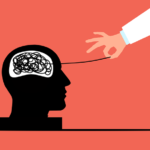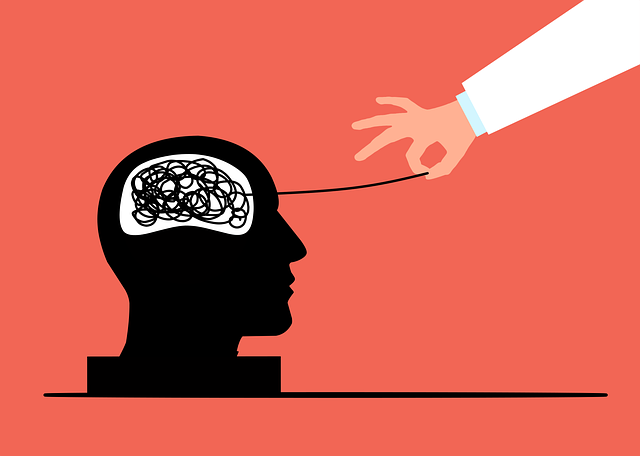Thinking feels like a spontaneous act, a stream of consciousness flowing freely from one idea to the next. But in reality, thoughts don’t just appear at random—they follow well-worn trails in the mind, moving along familiar routes like water carving deeper grooves into a riverbed.
We think in patterns, often without realizing it. The way we interpret situations, react to emotions, or make decisions tends to follow predictable loops, shaped by experience, conditioning, and belief systems. The same thought patterns repeat themselves day after day, creating an internal dialogue that is more habit than conscious choice. And just like any habit, these patterns can either serve us or trap us.
The Familiarity of Thought Loops
Ever notice how some people always assume the worst? No matter the situation, their first thought is that something will go wrong, that people have bad intentions, that disaster is lurking just around the corner. This isn’t because they’ve analyzed every situation from scratch—it’s because their mind is trained to anticipate negativity. Their pattern of thought leads them there automatically.
On the other hand, there are people who seem unshakable, who always find an upside or a lesson, no matter what happens. It’s not that their lives are any easier, but that their minds are wired to process challenges differently. They don’t have to force themselves to look for silver linings—it’s where their thoughts naturally go.
These patterns shape how we interact with the world. A person who has learned that love is conditional will constantly scan for signs of rejection, even when none exist. Someone who grew up believing they are capable and resourceful will approach problems with an expectation of success. Two people can be in the same situation and experience completely different realities, simply because their thought patterns interpret events in entirely different ways.
How Thought Patterns Are Formed
Patterns of thinking don’t come out of nowhere. They are built over time, shaped by early experiences, repeated messages, and emotional reinforcements. A child who is constantly criticized may develop a pattern of self-doubt, questioning every decision and assuming they’re always on the verge of failure. A child who is encouraged and supported may grow up with a pattern of confidence, trusting their instincts and feeling capable of handling challenges.
But thought patterns don’t just come from childhood. They can also be shaped by repeated experiences in adulthood—relationships that reinforce insecurities, workplaces that foster self-doubt, or personal failures that solidify a fear of taking risks. The mind learns what to expect, and once it forms a pattern, it sticks to it unless something disrupts the cycle.
This is why breaking a pattern of negative thinking isn’t as simple as just “thinking positive.” The mind defaults to what it knows. If a person has spent years telling themselves they aren’t good enough, they can’t suddenly believe the opposite overnight. Changing thought patterns requires disrupting the automatic loop and consciously rerouting it in a different direction.
Repetition Strengthens Thought Loops
The more we think a certain way, the stronger that pathway becomes. If someone spends years reinforcing a thought like “People can’t be trusted,” their brain will collect evidence to support that belief, filtering out anything that contradicts it. The more the pattern repeats, the more natural it feels. Eventually, it stops feeling like a perspective and starts feeling like the truth.
This is why some people get stuck in cycles of self-sabotage. If someone believes they aren’t worthy of success, their mind will unconsciously guide them toward choices that reinforce that belief. They might procrastinate, avoid opportunities, or settle for less than they deserve—not because they want to, but because their thought pattern leads them there.
Conversely, someone who believes they are capable and deserving will make choices that reflect that belief. They will apply for the job, take the risk, set the boundary—because their thought pattern leads them toward action instead of hesitation.
Recognizing the Loops
Most people don’t recognize their own thought patterns because they feel automatic. They assume their thoughts are simply reflections of reality, rather than scripts their minds have been running on repeat. But once you start paying attention, the patterns become obvious.
Look at the thoughts that show up most frequently. Are they hopeful or discouraging? Do they assume the best in people or the worst? Do they make you feel empowered or powerless? If the same types of thoughts keep appearing in different situations, it’s not because those situations are all the same—it’s because your thinking pattern is leading you to the same conclusion every time.
Breaking the Cycle
Changing a thought pattern isn’t about forcing yourself to think differently; it’s about interrupting the automatic loop. It starts with noticing the pattern in the moment—catching yourself in a familiar thought and questioning it instead of just accepting it.
If the thought is, “I always mess things up,” pause and ask, “Is that actually true? Or is this just a pattern?” If the thought is, “Nobody really cares,” stop and ask, “What if my mind is just used to thinking this way?”
Once a pattern is questioned, it loses some of its power. It creates space for a new thought, a new interpretation. And when that new thought is reinforced, over and over, a new pattern begins to form.
Final Thoughts
Thinking isn’t random—it follows paths, habits, and patterns that shape how we see the world. These patterns can be empowering or limiting, supportive or destructive. The key is recognizing when we are caught in a loop and realizing that just because a thought feels natural doesn’t mean it’s true.
If thinking is a pattern, then it can be rewritten. And when we change the patterns, we change the way we experience everything.













